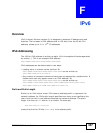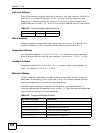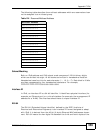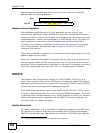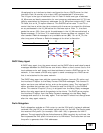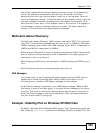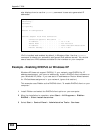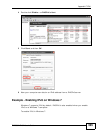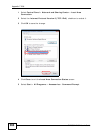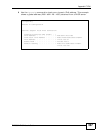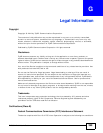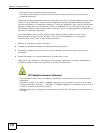
Appendix F IPv6
EMG5324-D10A User’s Guide
363
and can be reached directly without passing through a router. If the address is
unlink, the address is considered as the next hop. Otherwise, the Device
determines the next-hop from the default router list or routing table. Once the
next hop IP address is known, the Device looks into the neighbor cache to get the
link-layer address and sends the packet when the neighbor is reachable. If the
Device cannot find an entry in the neighbor cache or the state for the neighbor is
not reachable, it starts the address resolution process. This helps reduce the
number of IPv6 solicitation and advertisement messages.
Multicast Listener Discovery
The Multicast Listener Discovery (MLD) protocol (defined in RFC 2710) is derived
from IPv4's Internet Group Management Protocol version 2 (IGMPv2). MLD uses
ICMPv6 message types, rather than IGMP message types. MLDv1 is equivalent to
IGMPv2 and MLDv2 is equivalent to IGMPv3.
MLD allows an IPv6 switch or router to discover the presence of MLD listeners who
wish to receive multicast packets and the IP addresses of multicast groups the
hosts want to join on its network.
MLD snooping and MLD proxy are analogous to IGMP snooping and IGMP proxy in
IPv4.
MLD filtering controls which multicast groups a port can join.
MLD Messages
A multicast router or switch periodically sends general queries to MLD hosts to
update the multicast forwarding table. When an MLD host wants to join a
multicast group, it sends an MLD Report message for that address.
An MLD Done message is equivalent to an IGMP Leave message. When an MLD
host wants to leave a multicast group, it can send a Done message to the router
or switch. The router or switch then sends a group-specific query to the port on
which the Done message is received to determine if other devices connected to
this port should remain in the group.
Example - Enabling IPv6 on Windows XP/2003/Vista
By default, Windows XP and Windows 2003 support IPv6. This example shows you
how to use the ipv6 install command on Windows XP/2003 to enable IPv6. This





